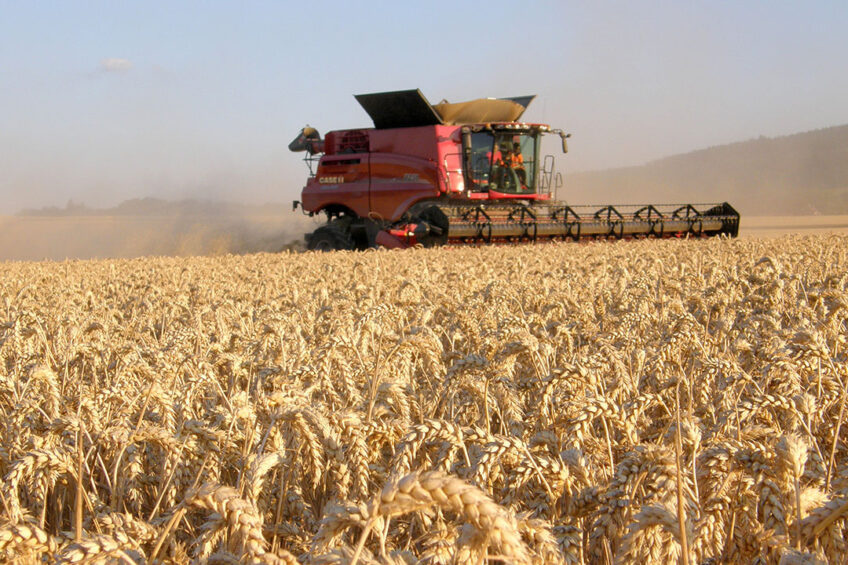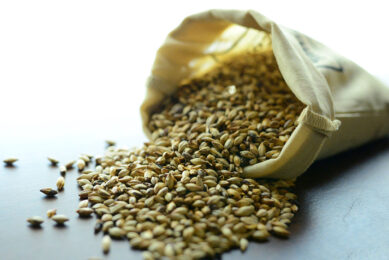Mycotoxins impact feed quality in 2021 European grain harvest

Extreme weather patterns across Europe in 2021 have been blamed for increased levels of mycotoxins in arable crops creating concerns over the subsequent quality of animal feed.
Mycotoxins, which are produced by certain species of moulds, are a concern for livestock producers due to their ability to influence feed quality and subsequent animal health and performance.
During extensive research across a number of European countries, a pattern of increased mycotoxins has been documented in the latest harvest analysis report from Alltech, in collaboration with SGS.
Just under 1,200 samples of barley, wheat, corn, corn silage, grass silage, alfalfa haylage, triticale, straw and whole crop silage (wheat and barley) were taken for analysis. Several farms or animal feed production sites across Russia, Spain, Denmark, Hungary, Romania, Germany, Netherlands, the UK, Ireland, Bulgaria, Czech Republic, Lithuania, Latvia, Greece, Belarus, Croatia, Serbia, Slovakia and Ukraine were involved in the data gathering.
Moderate to high risk
Data collected for the key feed ingredients indicated the presence of moderate to high levels of mycotoxin risk. Across all samples, there was an average of 4.34 mycotoxins detected, with 98.5% containing at least 1 mycotoxin and 86.1% containing 2 or more mycotoxins.
Type B-trichothecenes were found in 87% of the grain samples, which is a similar number to those found in 2020. The highest concentration of deoxynivalenol or DON (10,914 ppb) was detected in a Danish straw sample. Out of over 600 corn samples analysed, 24% of these contained aflatoxins, a notably higher percentage than 2020 and something feed and livestock producers should be aware of when putting mycotoxin control plans in place for the coming season.
Of the corn samples analysed using an LC-MS/MS method, fusaric acid was the most prominent mycotoxin, detected in 96.7% of samples, while type B-trichothecenes and fumonisins were found in 90% and 83% of samples, respectively.
Sever drought “likely cause” of aflatoxin in corn
Severe drought across central and eastern Europe is being cited the likely cause of high levels of aflatoxin in corn samples in the region. A number of the samples tested exceeded regulatory levels for the mycotoxin, posing a direct risk to livestock and creating concerns about the subsequent impact on milk quality.
The analysis also revealed a unilateral low mycotoxin risk across the tested areas for small grains, such as wheat and barley. Last year was also the first time a representative quantity of straw samples for use in swine production were tested, revealing a higher risk of mycotoxins, with DON being the most prevalent.
More emerging mycotoxins
A higher number of samples contained emerging mycotoxins, including beauvericin, moniliformin, phomopsin A, alternariol and enniatin A and B. Of small grain (wheat, barley and triticale), 77% of samples contained emerging mycotoxins.
Fusaric acid, which is reported separately but also belongs to emerging mycotoxins, was found in almost 6% of small grain samples. Fusaric acid gets into many mycotoxin interactions and has a synergistic effect with other mycotoxins like fumonisins and moniliformin.
Mycotoxin that impacts fertility found in 46% of grain samples
Zearalenone (ZEN), a mycotoxin that can significantly impact the fertility of most species groups, was detected in 46% of grain samples. Type A-trichothecenes (T-2 toxin/HT2-toxin), particularly harmful toxins, were detected in less than 43% of the samples, which is potentially higher than expected considering the dryer-than-normal conditions across much of central and eastern Europe last year. Very high levels of T-2 toxin (2,545 ppb) were detected in corn collected in Ukraine.
Dr Radka Borutova, European technical support manager, Alltech Mycotoxin Management team: “Overall, the current results indicate a moderate to high mycotoxin risk across Europe [in 2021], and producers must remain aware of how the risk and impact will vary between different species and animal groups, with breeding animals and youngstock being more susceptible. We know that feeding even low-level contaminated feeds has been shown to impact animal health and performance, so even in lower-risk scenarios, producers should not neglect the need to guard against the threat of mycotoxins.”
Forage contamination
The report also takes a closer look at the mycotoxin contamination of forages after 126 samples of corn silage, grass silage, wheat and barley whole crop silage and alfalfa haylage were taken across the continent.
Samples show an average of 3.2 mycotoxins, with 100% containing at least 1 mycotoxin and 96.8% containing 2 or more mycotoxins. Type B-trichothecenes were found in 97% of the samples, while 95% contained fusaric acid.
Nearly 50% of forages contained Penicillium mycotoxins, and less than 1% of samples were contaminated with aflatoxin B1. The maximum concentration of Penicillium mycotoxins was found in the UK in grass silage (3,946 ppb). The results from the forage samples analysed also indicate a moderate to high risk in dairy cows, beef cattle and heifers.
Risk of feeding livestock feed with mycotoxins
The report also outlined the risk levels associated with feeding different animal species with feed with mycotoxins present.
It said: “Pig producers should be aware that the corn risk level based on the average REQ for breeding sows and young piglets is deemed to be moderate to high, while the risk coming from small grain, wheat and barley, is low, with certain pockets of moderate to high risk. When the mycotoxin corn contamination levels are applied to poultry, the mycotoxin risk for breeding birds, broilers and layers is moderate, while the risk coming from small grain is low. And, in ruminants, the results from the corn and forage samples analysed so far indicate a moderate to high risk in dairy cows.”
Aflatoxin B1 threat
According to the European regulatory authorities, aflatoxin levels (AfM1) in milk for human consumption cannot exceed 0.05 parts per billion, which means complete feedstuffs are limited to 5 ppb Aflatoxin B1 when used in dairy diets. Any feed material, such as corn or wheat, is limited to 20 ppb Aflatoxin B1.
The news from Hungary, Serbia, Romania and Croatia, was particularly bad for dairy farmers there as average levels of mycotoxins identified did not meet EU-recommended levels for each of the mycotoxins when assessed individually.
A total of 4.2% of corn samples exceeded the EU-allowed concentration of Aflatoxin B1 in feed ingredients, which is very high compared to 2020 when only 0.36% of samples exceeded EU-allowed concentrations.
There was a notable difference in the mycotoxin contamination levels of large grains like corn and in small grains like wheat and barley. The average number of mycotoxins detected in corn samples was 5.2, while in small grains, it was 3.1.
Join 26,000+ subscribers
Subscribe to our newsletter to stay updated about all the need-to-know content in the feed sector, three times a week. Beheer
Beheer









 WP Admin
WP Admin  Bewerk bericht
Bewerk bericht